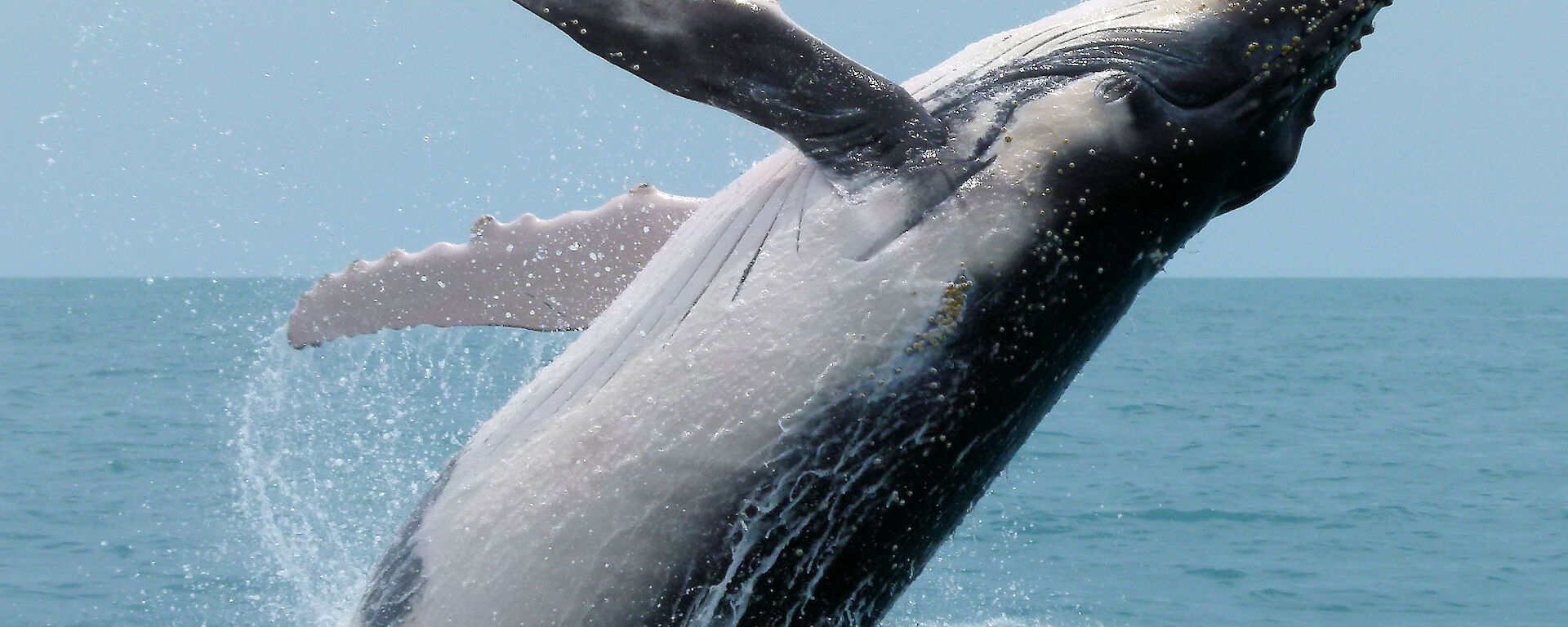A DNA-based test for estimating the age of humpback whales has earned its co-developer, Australian Antarctic Division molecular biologist Dr Simon Jarman, a prestigious Fulbright Scholarship to study in the United States.
Dr Jarman and his colleague Andrea Polanowski, in collaboration with the US Centre for Coastal Studies and the Australian Genome Research Facility, developed the first DNA-based test for estimating the age of humpback whales, based on recent advances in human medicine.
The non-lethal test looks at age-related changes in the DNA of skin samples that can be collected from live whales using biopsy darts.
The test relies on changes in the ‘DNA methylation’ of genes involved in the ageing process. DNA methylation is a biochemical process where a methyl group (CH3) is added to specific DNA building-blocks. This process alters the expression of genes.
‘We’ve long known that DNA methylation is involved in processes like sex determination and the development of many cancers, but it has only recently been shown to be involved in the ageing process,’ Dr Jarman said.
‘We used information on age-associated DNA methylation in human and mouse genes, to identify similar gene regions in humpback whales. We then developed an assay using three of the most informative methylated genes, which estimates age with a high level of precision.’
Dr Jarman’s scholarship will enable him to spend three months working with scientists from the Centre for Coastal Studies in Massachusetts, to study humpback whales in the Gulf of Maine, refine the DNA ageing method, and improve understanding of whale ecology.
‘The population of humpback whales in the Gulf of Maine has not been hunted since the early 1900s and it contains a large number of whales of known age, as they were visually observed when they were less than one year old and re-sighted in later years,’ Dr Jarman explained.
‘In contrast, Australian humpbacks were hunted until 1962, which is within the 95 year life span of individuals in the current population; so we expect the population to be biased towards younger animals.
‘We’ll compare skin biopsy samples from the known-age whales to our Australian population to calibrate the DNA age estimation method and get a more accurate picture of the age structure of the Australian humpbacks.’
Dr Jarman said the scholarship would also allow him to investigate other population parameters.
‘Estimating age is important for monitoring the recovery of whale populations following commercial whaling. When combined with genetic information about the relatedness of individuals in a population (parents, siblings, offspring), age data improves methods for estimating the size of whale populations and their reproductive potential. It is also critical to understanding how biological characteristics of whales change with age.’
Dr Jarman’s work could also be extended to age estimation in other animal species.
‘We intend to develop similar genetic age estimation methods for other long-lived wild animals such as albatross and penguins and to use the age information for population status monitoring,’ he said.
Dr Jarman’s previous research has included the study of Antarctic animals’ diets, including penguins, Antarctic krill, seals and whales, using the DNA found in their stomach contents and scats.
The Fulbright Program is the largest and one of the most prestigious educational scholarship programs in the world, operating in the United States and over 155 countries worldwide. Dr Jarman will travel to the United States to take up his scholarship in August.
Wendy Pyper
Australian Antarctic Division



